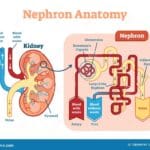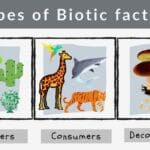Hey there, future neuroscientists! Get ready to embark on an amazing journey into the mind of a sheep! We’ll explore its brain from the outside in, uncovering the secrets of this fascinating organ. Think of it as a 3D puzzle we’ll solve together, using labeled diagrams, videos, and even interactive 3D models. So, grab your lab coats and let’s dive in!
Prepping for Your Brainy Adventure
Before we begin, let’s gather our essential exploration gear. It’s like packing for a scientific expedition! You’ll need:
- Dissecting Tray: This provides a stable platform for your specimen and contains any…well, you get the picture.
- Scalpel: Your precision instrument for careful incisions. Sharpness is key!
- Scissors: For tougher cuts and trimming.
- Forceps: These are like tiny scientific tongs for delicate handling.
- Probes: Blunt tools for gentle exploration and pointing.
- Pins: To hold structures in place for optimal viewing.
- Gloves: Essential for hygiene and safety. Don’t skip these!
Safety First!
Working with biological specimens requires caution. Always wear gloves and dispose of them properly afterward. A well-ventilated area is also recommended. Now, let’s get started!
Exploring the Brain’s Landscape
External Examination: A First Glimpse
Think of this as checking out a map before you start your hike. You’ll notice the brain is encased in a tough, protective layer called the dura mater—like the brain’s personal helmet. Gently remove this to reveal the structures beneath. You’ll see:
- Cerebrum: The largest part, responsible for higher-level thinking, learning, and memory.
- Cerebellum: Located at the back, essential for coordination and balance. It helps you dance without tripping!
- Brainstem: The vital link connecting the brain and spinal cord, controlling essential functions like breathing and heart rate.
- Spinal Cord: The information highway between the brain and the rest of the body.
- Pituitary Gland: A tiny but mighty hormone regulator, influencing everything from growth to reproduction.
- Optic Chiasma: The intersection where the optic nerves cross, carrying visual information from your eyes.
- Olfactory Bulbs: These process smells, much more prominent in sheep than in humans, reflecting their reliance on scent.
Explore the world of ovine anatomy with our comprehensive guide to sheep’s pluck, which includes the heart, lungs, and trachea – other vital components of the sheep’s overall physiology.
Internal Investigation: Delving Deeper
Now for the real adventure! We’ll make two main types of cuts to explore the inner workings:
1. Sagittal Section (Lengthwise):
This divides the brain into left and right halves, revealing:
- Corpus Callosum: A thick band of nerve fibers connecting the two hemispheres, enabling communication between them.
- Ventricles: Fluid-filled cavities that cushion and protect the brain.
2. Coronal Section (Crosswise):
These cuts offer a different perspective, showcasing:
- Thalamus: A relay station, directing sensory information to the right parts of the cerebrum.
- Hypothalamus: A key regulator of body temperature, hunger, thirst, and other vital functions.
- Pineal Gland: Produces melatonin, the hormone that regulates your sleep-wake cycle. It’s your internal clock!
- Midbrain, Pons, and Medulla Oblongata: Parts of the brainstem, each with unique roles in processing information and controlling vital functions.
Putting the Pieces Together
Functional Areas: How It All Works
Each brain structure plays a specific role. Here’s a recap:
| Brain Structure | Primary Function(s) |
|---|---|
| Cerebrum | Higher cognitive functions, learning, and memory |
| Cerebellum | Motor coordination, balance |
| Thalamus | Sensory information relay |
| Hypothalamus | Body temperature, hunger, thirst, hormone regulation |
| Midbrain | Visual and auditory processing |
| Pons | Communication between brain and spinal cord |
| Medulla Oblongata | Vital functions (breathing, heart rate) |
Sheep vs. Human Brains: Spotting the Differences
While sheep brains offer invaluable insights into the mammalian brain, there are key differences compared to human brains:
- Size: Sheep brains are generally smaller.
- Olfactory Bulbs: Proportionally larger in sheep, emphasizing their reliance on smell.
- Cerebrum: Smaller in sheep, likely reflecting differences in complex cognitive abilities.
Current research suggests these structural variations may correlate with behavioral and cognitive differences between species. However, much remains to be explored in the fascinating field of comparative neuroanatomy.
Delve into the fascinating realm of cellular morphology and learn about the unique characteristics of stomatocytes, a type of red blood cell that can offer insights into various physiological processes.
Boosting Your Brainpower: Learning Resources
Maximize your learning with these helpful tools:
Labeled Diagrams: Your Brain’s Roadmap
Labeled diagrams provide a clear visual guide to the brain’s complex structure, enhancing comprehension and memory.
Videos: Bringing the Brain to Life
Dissection videos offer a dynamic perspective, demonstrating processes and structures in action.
Interactive 3D Models: Exploring Every Angle
These models allow you to manipulate and explore the brain in three dimensions, solidifying your understanding of spatial relationships.
Worksheets and Quizzes: Test Your Knowledge
Reinforce your learning with interactive exercises and quizzes.
Glossary of Terms: Decoding Neuroanatomy
A glossary clarifies technical terms, making complex concepts more accessible.
A Word of Caution: Limitations and Ethical Considerations
While valuable, sheep brain dissection has limitations:
- Preserved vs. Living: A preserved brain differs from a living, functioning one.
- Evolving Knowledge: Our understanding of the brain is constantly evolving, and current interpretations may change with future research.
It’s also important to consider the ethical implications of using animal specimens. Explore alternatives like virtual dissection software, which can offer a cruelty-free learning experience.
Conclusion: Your Journey of Discovery
Sheep brain dissection provides a remarkable opportunity to explore the complexities of the mammalian brain. By combining hands-on exploration with interactive resources, you can gain a deeper appreciation for this incredible organ and the ongoing research that continues to unlock its mysteries. So, embrace your curiosity and continue exploring the fascinating world of neuroscience!
- Unlock Elemental 2 Secrets: Actionable Insights Now - April 2, 2025
- Lot’s Wife’s Name: Unveiling the Mystery of Sodom’s Fall - April 2, 2025
- Photocell Sensors: A Complete Guide for Selection and Implementation - April 2, 2025















